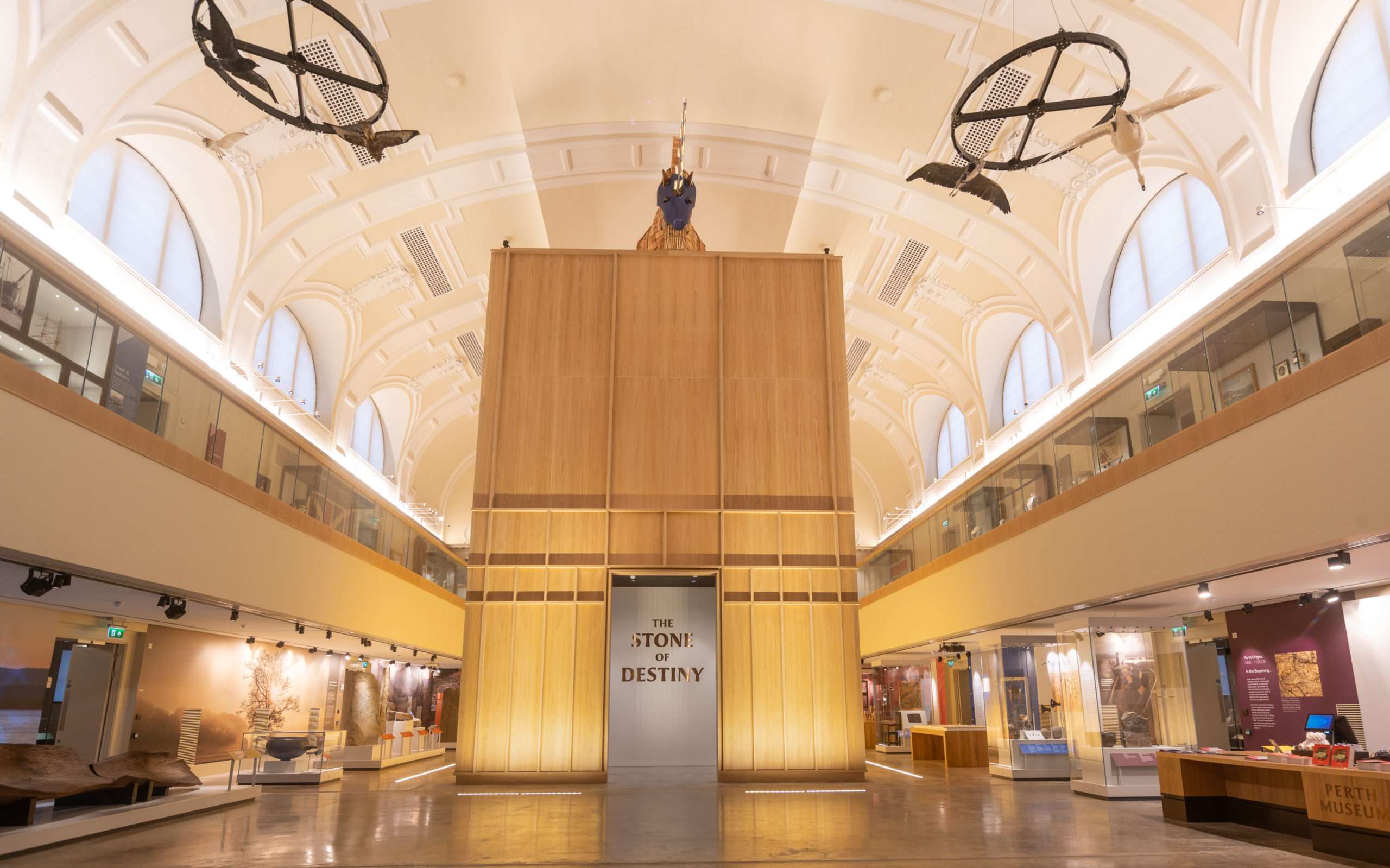The new Perth Museum open its doors earlier this year after a £27 million development project. This world-class cultural and heritage attraction highlights the fascinating objects and stories that put Perth and Kinross at the centre of Scotland’s story. At its heart sits the Stone of Destiny, also known as the Stone of Scone, one of Scotland and the UK’s most significant historical objects. The Scottish Banner spoke to João Philippe Reid, Exhibitions and Interpretation Manager, at Perth Museum on some of the many attractions found at the museum and why you should include Perth on your next visit to Scotland.
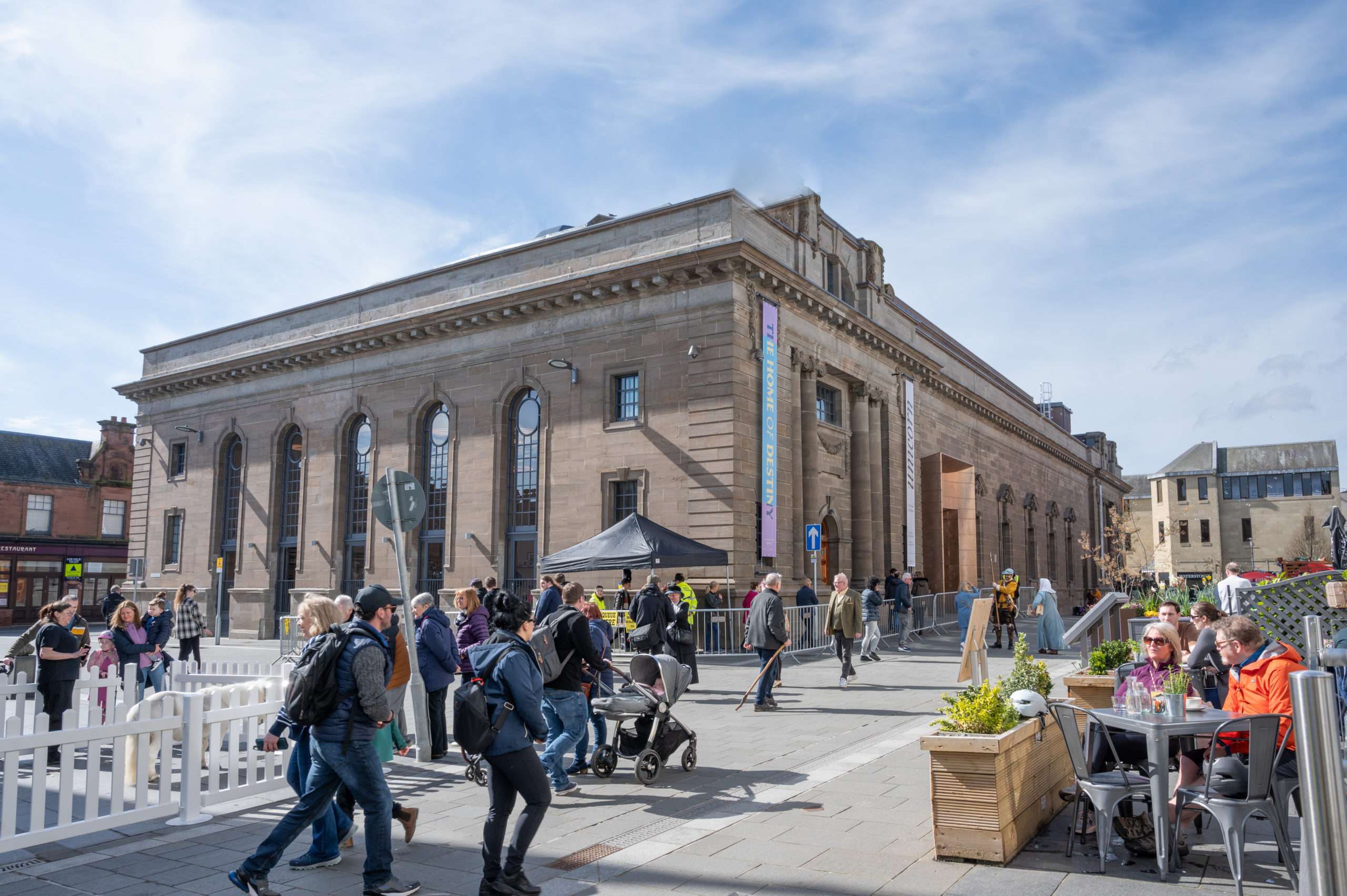
Perth Museum recently opened its doors after an exciting £27m redevelopment of the former city hall. Can you tell us the background to the new Perth Museum?
JPR: The driver for a new museum came about from a number of different needs – there was a recognition that the nature of high street economies has been changing; that a recalibration away from retail-dependency is really important to create thriving urban spaces. There was also an understanding that Perth & Kinross’ nationally significant museum collections were untapped and limited by a lack of display space (there are some astonishing objects in the collection which have been off public display for decades). Finally, there was a huge, empty building at the very heart of the city centre – a building which historically had played a prominent role in the life of Perth but which by the time the project really got going in 2017, had been blighting its environment for over a decade.
And the site is an important part of the museum ethos – that building, and its predecessor have been the social, political and cultural heart of the city for 180 years – everything from political rallies, gigs, record sales, dance competitions, school concerts, and wrestling matches happened there and there’s a very profound sense of identification with the building from local communities. Visitors regularly come in and say things like, ‘my grandparents met at a dance in this building’ or ‘I played clarinet in a school concert on the stage here.’ In this, the museum is a perfect vehicle to explore the stories of this place.
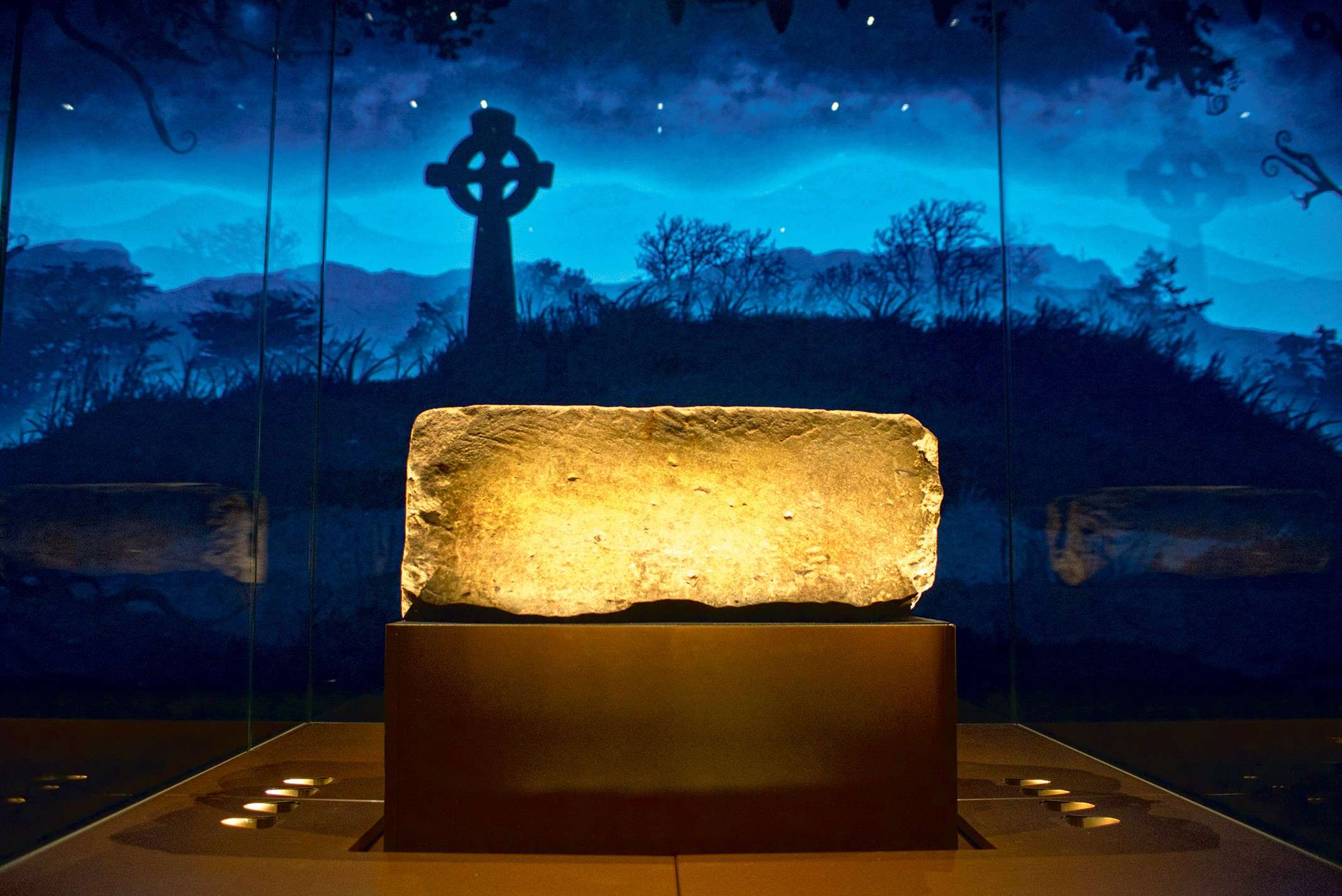
The new Museum’s centrepiece is the Stone of Destiny. Can you tell us about the history of the Stone of Destiny and why this is such a coup for the Museum to house?
JPR: The Stone is a symbol of power and has been for hundreds of years. It is also an object of ongoing contention, for Scots it is a symbol of Scottish nationhood, for others it is symbolic of the integration of the crowns of England and Scotland and the Union – and it has gone backwards and forwards over the border a few times since it was first seized in 1296.
The Stone of Scone (Stone of Destiny is a later name that became very fashionable with the Victorians) refers to the inauguration Stone, a superficially innocuous block of sandstone that new monarchs were inaugurated on at Scone Abbey, an important royal centre a few miles north of Perth. The monarch-to-be, surrounded by bishops and nobles would sit on the Stone and be elevated to kingship (no queens were inaugurated on the Stone while it was in Scotland). When King Edward I of England invaded Scotland, he sacked Scone Abbey and removed the Stone in 1296, he commissioned a golden throne to house the Stone at Westminster Abbey in London. This is still known as the Coronation Chair and, with the Stone encased in it, Edward was making a clear political message: by sitting on this Stone, me and my heirs are the rulers of Scotland. The same chair (and of course the Stone) are still used in coronations of British monarchs today.
As a disputed object the Stone has attracted a lot of origin myths – some believe is ‘Jacob’s Pillow’, the stone on which the grandson of Abraham rested when he was shown a vision of a stairway to heaven. The English favoured this myth because it implied that their keeping of the Stone in London was the will of God. The Scots favoured a myth which traced the Stone’s origins to Scota, daughter of the Pharoah, who carried the Stone from Ancient Egypt to the Hill of Tara from where, centuries later, it was brought to Scone by the (traditional) first King of Scotland, Kenneth MacAlpin – this myth emphasised Scotland’s status of a longstanding independent realm in the face of English aggression. But there are many other myths, including ongoing arguments about authenticity – some people believe that the ‘real’ Stone is buried under Dunsinane Hill near Perth (of MacBeth fame) or even in a pub in Glasgow called The Arlington Bar.
Due to recent scientific analysis, we know that the Stone is red sandstone that was quarried a couple of miles outside Scone. From the patterns of wear on its surface, we also know that it would likely have been used as a step or threshold for an important ancient building, possibly retrieved from a Roman ruin.
The Stone of Destiny returned to Perthshire for the first time in over 700 years. Can you tell us what the logistics was like for this to take place and also for any future necessity to have the stone moved for ceremonial purposes?
JPR: Sadly I can’t. Security and logistics around movement of the Stone is extremely sensitive owing to the fact that it has been the target of repeated attempts of theft or damage (including as recently as 2023).
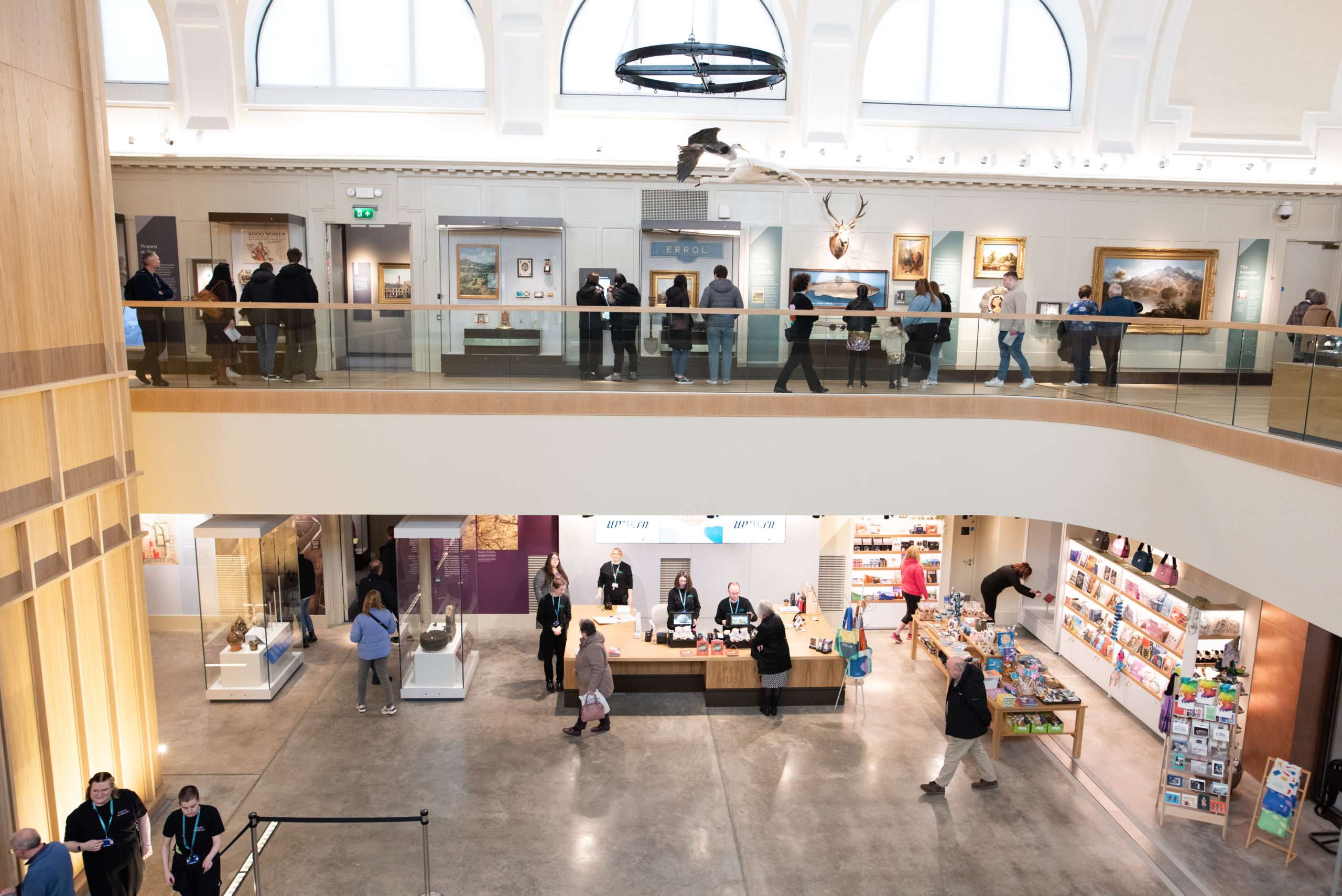
Apart from the Stone of Destiny the Museum holds more than 3,000 objects, spanning 10,000 years. Can you outline some of the other ‘must see’ items visitors can see at the Museum?
JPR: Perth holds one of the oldest public collections in the UK having been founded in 1784. It’s incredibly rich and diverse covering Natural History, Fine Art, Social History, archaeology, costume and World Cultures and numbering over half a million objects in total. Because of Scone and Perth’s prominence as an early royal centre and medieval economic hub, and because of distinct preservation conditions in the ground here, material survives that can paint a very rich picture of what life was like centuries ago. From 700-year-old children’s shoes and leather purses, to ivory combs and knives, the medieval collections are eye-opening. I particularly like an 13th century old egg which was found during excavations of a medieval midden in the city centre. It looks like an egg you could buy at the supermarket today but has remained perfectly intact for over 700 years.
Some of the most impressive and imposing objects in the collection are the carved Pictish Stones which are between 1,000 and 1,500 years old. Often intricately decorated with animals and mysterious symbols, these huge monoliths once stood in the landscape as markers of church and secular power. The Picts, who were the predominate political force in early medieval eastern Scotland after the retreat of the Romans, also created astonishingly intricate and opulent jewellery, many examples of which are on display at the new museum.
Another example of opulence is a slashed silk doublet from the 1620s – this is an extremely rare survival. Effectively a gentleman’s jacket, this example, from a wealthy family in Highland Perthshire, is virtually unmatched in condition. It looks new and very few of these survive in a condition in which they can be even put on public display.
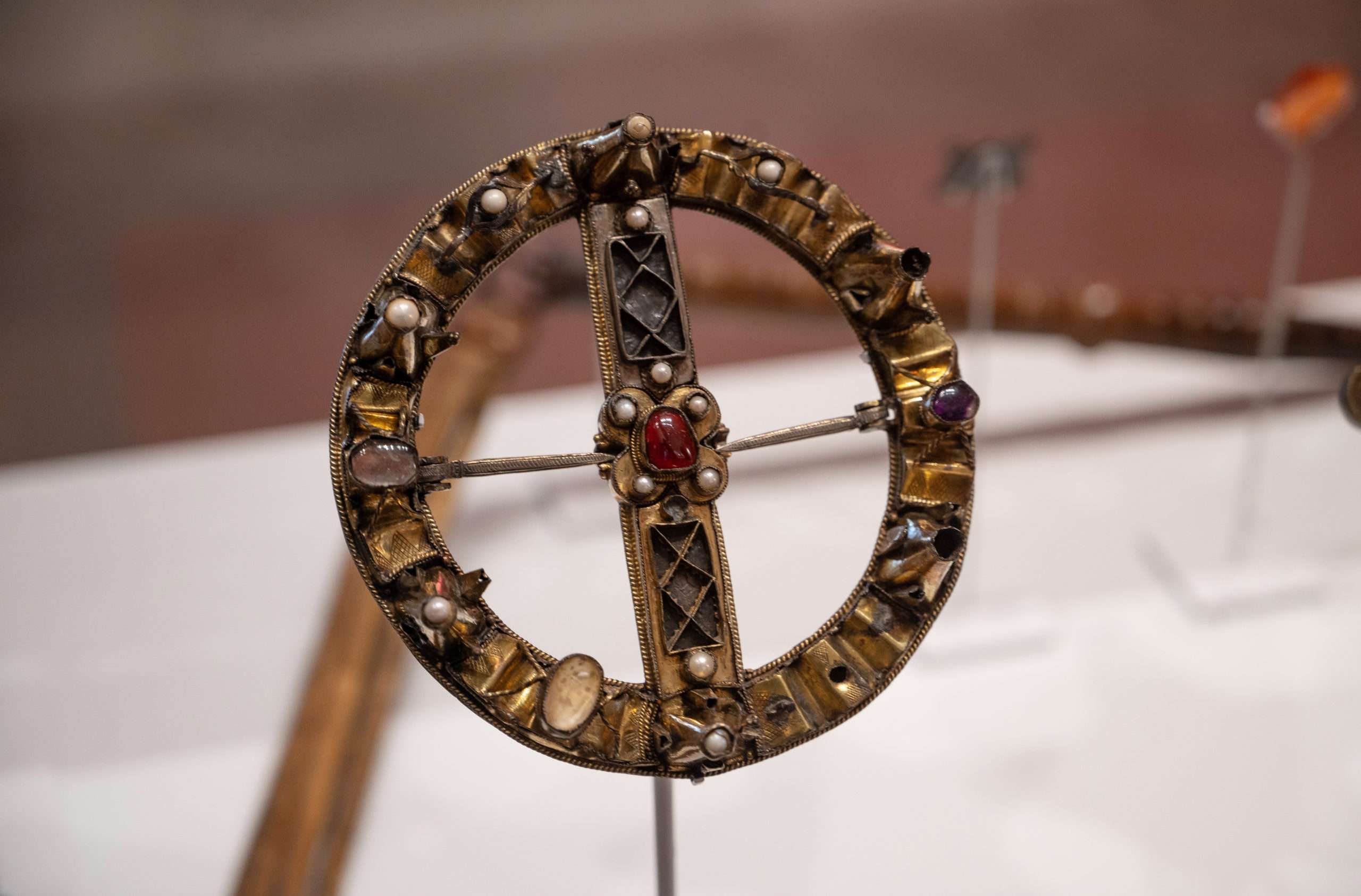
Perth Museum’s first exhibition is Unicorn. This is the first major UK exhibition to explore the cultural history of Scotland’s national animal from antiquity to the present day. Can you tell us how this exhibition came about and how visitors to Scotland this summer can enjoy this exhibition?
JPR: There are a few key themes in the museum’s permanent galleries around monarchy and symbols of power. We’re interested in how power articulates itself through symbols (like a 152kg block of sandstone or Pictish carved stones for example). Many countries have national animals and many of these first arose in the medieval period when dynasties were effectively attempting to ‘brand’ themselves – the kings of France opted for a Porcupine, Aragon and Castille for a Black Eagle and England for the Lion for example. In Scotland, King James I selected a Unicorn, wrapped in chains and wearing a crown collar – so the exhibition premise began with an interest in the circumstances in which a mythical creature came to be associated with Scottish monarchy.
The exhibition starts with this theme, looking at the use of the unicorn on Mercat crosses (market crosses still found across Scotland today), coins, books and in the iconography of the Union (the lion and the unicorn). But the exhibition expands to look at the history of unicorns, from the classical period through to the present day. We tell the story of this mythical creature through Italian Renaissance oil paintings, medieval illuminated manuscripts, narwhal tusks (which were traded as unicorn horns) and many other fascinating objects. But the exhibition is one of two halves, whilst the first galleries are focused on this creature’s use and representation in history, the final part of the exhibition explores contemporary culture’s continuing fascination with unicorns as pop cultural icons and as symbols of LGBTQ+ identity. These spaces feel very different and feature an amazing mass display sourced from local communities of pop cultural unicorns (such as ‘My Little Pony Unicorns’ or ‘The Last Unicorn’ posters) as well as a set of striking contemporary art commissions which explore the use of Unicorn iconography as a symbol of LGBTQ+ resilience and strength.
Since opening on March 30th Perth Museum has already welcomed more than 50,000 visitors and been awarded a five-star visitor attraction status by the national tourism body, VisitScotland. How does that make the team behind the Museum feel to be acknowledged in this way by both the general public and tourism industry?
JPR: I think the team are really thrilled at the response to the new museum opening. We’re obviously still getting used to how the building operates now that it’s filled with people and learning about how things that we’ve been developing for years through blueprints and drawings, actually function in the real world. That’s been interesting and we’re trying to be very responsive to this phase where we’re learning what works best for visitors and the objects on display. There were a few areas of the development where we were trying something new and perhaps even, challenging (about how to tell the story of a particular object for example) and we’re really thrilled at the audience response to new ideas.
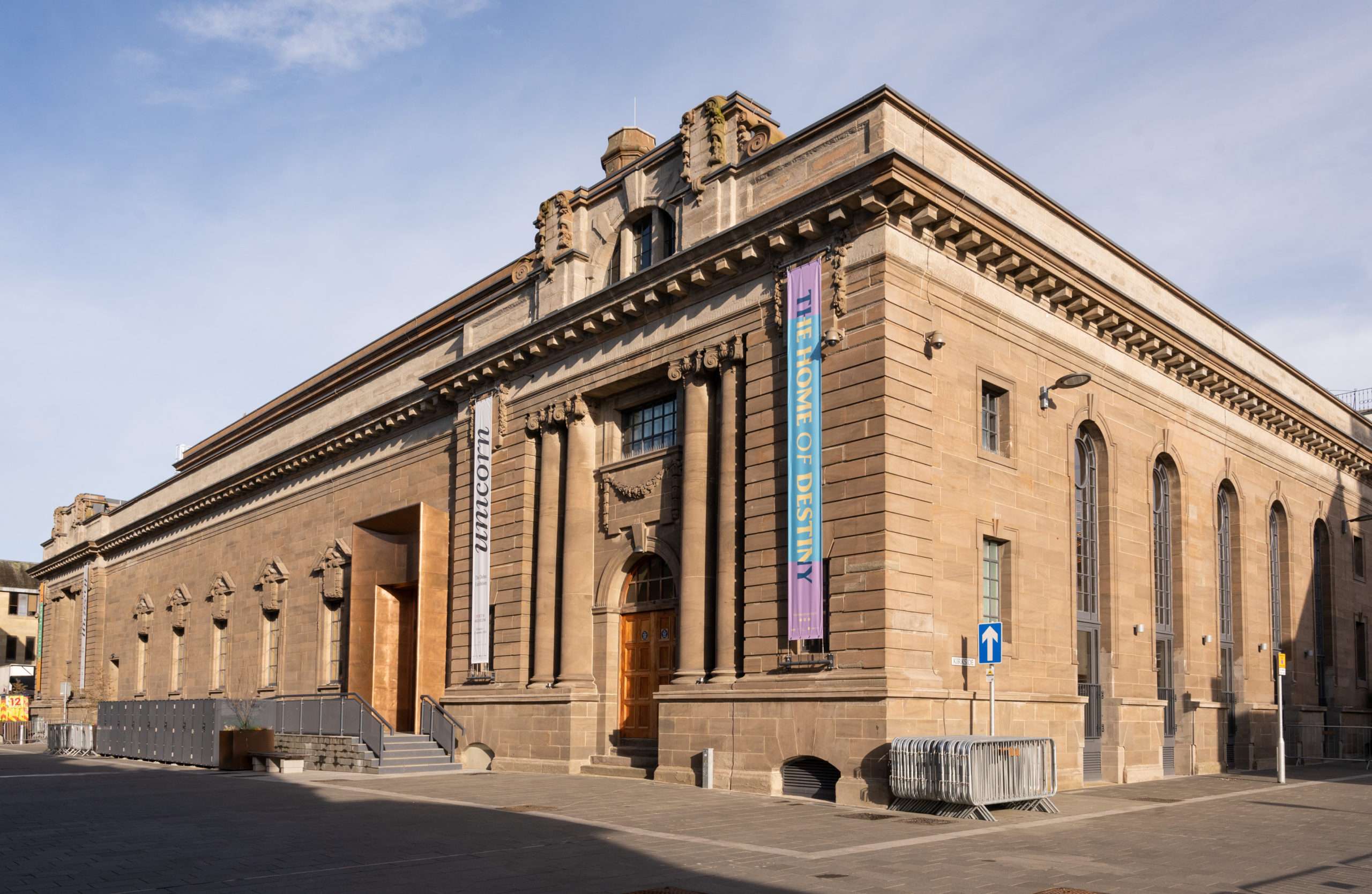
Scotland has a variety of world-class museums to visit. From learning more about the story of Scotland, to being a great place to get out of the weather, a day at the museum can be so rewarding. Why do you think it is important for a visitor to Scotland to include some museums in their itinerary?
JPR: Scotland’s is renowned for its stunning landscapes and vibrant cities, and these have been shaped by the people who have lived here. There is no better way of getting an understanding of place than through its museums – these are storehouses of stories and experiences – and there is no better route in to embracing the culture and life of a place than through its people – whether those are people living today or people hunting and gathering by riverbanks 10,000 years ago, or Roman soldiers standing guard over a border zone 2,000 years ago, or Victorian factory-workers, or Jacobite soldiers. Museums are places where experiences and stories over time come together.
For visitors who have yet to experience Perth or the surrounding Perthshire region, can you give us any recommendations for the first-time visitor to see (apart from the new Perth Museum of course!)?
JPR: Our sister venue, Perth Art Gallery, is just a couple of minutes’ walk from Perth Museum and houses an outstanding art collection including a newly completed exhibition on the important Scottish Colourist, J.D. Fergusson. Beyond that, given its close ties with the Stone of Destiny, Scone Palace (site of the now vanished Scone Abbey) is a great place to explore. Perthshire is home to some of the most iconic landscapes in Scotland, each one, resonating with history. From Mary Queen of Scots’ island prison of Loch Leven Castle to the recreation Iron Age village at the Scottish Crannog Centre by the banks of Loch Tay, from Lowland to Highland, Perth & Kinross has so much history and landscape to explore.
For more information on Perth Museum visit: perthmuseum.co.uk
Photos courtesy of Julie Howden and Culture Perth and Kinross.

